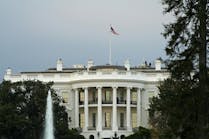CBO puts average cap-and-trade costs per household at $175 in 2020
The average cost per US household of a proposed cap-and-trade program in legislation before the House would be $175 in 2020, or $22 billion nationwide, the Congressional Budget Office said on June 19.
It was CBO’s second assessment of impacts from HR 2454, which the House Energy and Commerce Committee approved by 33 to 25 votes on May 20. On June 5, the congressional legislation economics analysis service said that the bill’s carbon cap-and-trade program would cost $846 billion in new taxes.
The bill’s co-sponsors said the latest finding proves that programs designed to address global climate change are economically feasible. “This analysis underscores that this legislation is effective and affordable,” said Henry A. Waxman (D-Calif.), chairman of the House Energy and Commerce Committee, which approved the bill by 33 to 25 votes on May 20. “It sets America on a course of energy independence while taking significant steps to reduce dangerous global warming pollution.”
“Americans know that building a clean energy economy has real value, and this CBO analysis proves it,” said Edward J. Markey (D-Mass.), who chairs the committee’s Energy and Environment Subcommittee. “Low-income American families will see a $40 benefit from using more wind and solar energy and less foreign oil. And for the cost of about a postage stamp a day, all American families will see a return on their investment as our nation breaks our dependence on foreign oil, cuts dangerous carbon pollution, and creates millions of new clean energy jobs that can’t be shipped overseas.”
CBO said that it focused on 2020 because HR 2454’s cap-and-trade program would have been operating for eight years by that time, long enough for the economy to have adjusted and a time when allocation of allowances would represent a situation prior to the phasing down of free allowances. “The incidence of gains and losses would be totally different once the free allocation of allowances had mostly ended,” it noted.
What wasn’t included
Its estimate included costs of restructuring the production and use of energy and payments to foreign entities under the program, but did not include economic and other benefits associated with greenhouse gas emissions and an associated slowing of climate change. CBO said that it could not determine the incidence of costs, benefits, and other factors that represent about 8% of the total.
For the remaining portion of the net cost, however, it found that households in the lowest quintile (20%) would see an average net benefit of about $40 in 2020, while households in the highest quintile would see a $245 net cost, it said. Overall net costs would average about 0.2% of households’ after-tax income, CBO said.
The bill was filed with the Rules Committee on June 22, a spokesman for US House Speaker Nancy Pelosi (D-Calif.) said that night. “There are some issues still under discussion, but we can resolve them by the time the bill goes to the floor on Friday,” he said in an e-mail message to reporters.
The spokesman said that Pelosi, House Majority Leader Steny H. Hoyer (D-Md.), Agriculture Committee Chairman Collin Peterson (D-Minn.), and Waxman “have all agreed on this approach for moving this historic climate change and clean energy jobs bill.”
Meanwhile, American Solutions, a citizens’ action group which has former House Speaker Newt Gingrich as its general chairman, said that it has launched a new national television commercial that calls attention to what it considers devastating economic costs under the bill. The American Petroleum Institute also said that it opposes HR 2454 “as it appears that time has run out to fix the proposal’s many flaws.”
Contact Nick Snow at[email protected]

